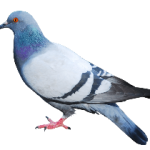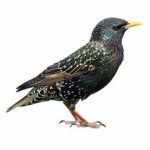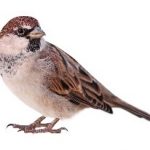Birds,
Zoonotic diseases, transferring from animals to humans, account for 75% of new human diseases.
Bird diseases can be viral, fungal, or bacterial, spreading through contact with feathers, faeces, or insect vectors.
Insects like mites and mosquitoes can carry bird infections to humans. Symptoms in infected birds and humans vary;
Those with compromised immune systems are more susceptible. Common diseases include avian influenza, avian tuberculosis, bird mites, psittacosis, encephalitis, histoplasmosis, and E. coli or salmonella infections.
Effective bird control is vital to prevent the spread of diseases, protecting both human health and property. Explore our bird control services for a comprehensive solution.
Beams Pest Management integrate customized safe and efficient bird-proofing ensuring both cost and time savings tailored to your specific issue. In contrast to do-it-yourself (DIY) bird control methods, which typically demand considerable physical labour and the use of costly materials
Our solutions are meticulously designed to protect the structural integrity of your building. This aspect is especially vital for commercial or heritage buildings, where preservation holds paramount importance.
THE ‘EAGLE EYE’
Optical bird scarers utilize light reflection to replicate the presence of a bird predator. Its optimal performance occurs in direct sunlight, and it has the capability to harness solar energy for power, presenting an eco-friendly and effective solution for bird control.
BIRD NETTING ‘
Bird nets are Specifically designed to keep birds at bay. Their primary goal is to stop birds from roosting and nesting on surfaces such as roofing, crevices, and other vulnerable areas.
ACOUSTIC DEVICES
Sound deterrents prove highly efficient in managing pest birds by emitting a high-frequency tone that is imperceptible to humans but prompts birds to evacuate the
area. This solution is particularly effective for large open spaces or situations where other control methods may not be applicable
BIRD SPIKES:
Offering a non-intrusive and harmless solution, bird spikes provide lasting value and protection against avian intruders for your business. It’s crucial to be aware that this specific solution might not be appropriate for smaller bird species.
ELECTRIC BIRD DETERRENTS ‘
The ‘Flex Track’ electric bird deterrent is designed to prevent birds from landing and can be installed on any flat surface. It is tailored for areas such as ledges, parapets, and beams.
Feral Pigeon:
Conservation Status: Introduced from Europe, Not Protected
Characteristics
- Average Size: 34cm
- Average Lifespan: 3 to 4 Years
- Lays average of 2 eggs per cycle
- Incubation: 17 to 19 days
- Fledgling: 30 days
- Breeding Behaviour: Forms monogamous pairs, breeds throughout the year which peaks in summer, capable of producing up to 15 offspring annually.
- Note: Feral pigeons pose concerns due to their introduced status, prolific breeding, and potential negative impacts on native wildlife and human environments

-
Common Name: European Starling / Common Starling
Family Name: Sturnidea
Status: Introduced from Europe, Not Protected - Lays average of 3-5 eggs per cycle
- Lays average of 2 eggs per cycle
- Incubation: 15 days
- Fledgling: 20 to 23 days
- Breeding: Monogamous pairs. Breeds from August to January. Can produce 2 to 3 broods per year.
- Impacts: Spreading of Weeds Fruit Crops, Disease, Damage to buildings
- Feeding: Insects

Indian Myna /
Status: Introduced from Europe, Not Protected
- Average Size: 24cm
- Average Lifespan: 4 Years
- Lays average of 4-6 eggs per cycle
- Incubation: 13 to 14 days
- Fledgling: 20 to 32 days
- Breeding: Monogamous pairs. Can produce 1 to 3 broods per year.
- Impacts: Displace native birds from natural habitat, Damage fruit crops, Noise, Mites from nest, Spread of weeds

Family Name: Passeridae
Status:Introduced, Not Protected
- Average Size: 15cm
- Average Lifespan: 3 to 4 Years
- Lays average: 3 to 6 eggs per cycle
- Incubation: 14 days
- Fledgling: 15 days
- Breeding: Monogamous pairs. Breeds year round however primarily in Summer & Spring. Can produce 3 broods per annum.
- Impacts: Nuisance
- Feeding: Seeds, and insects


